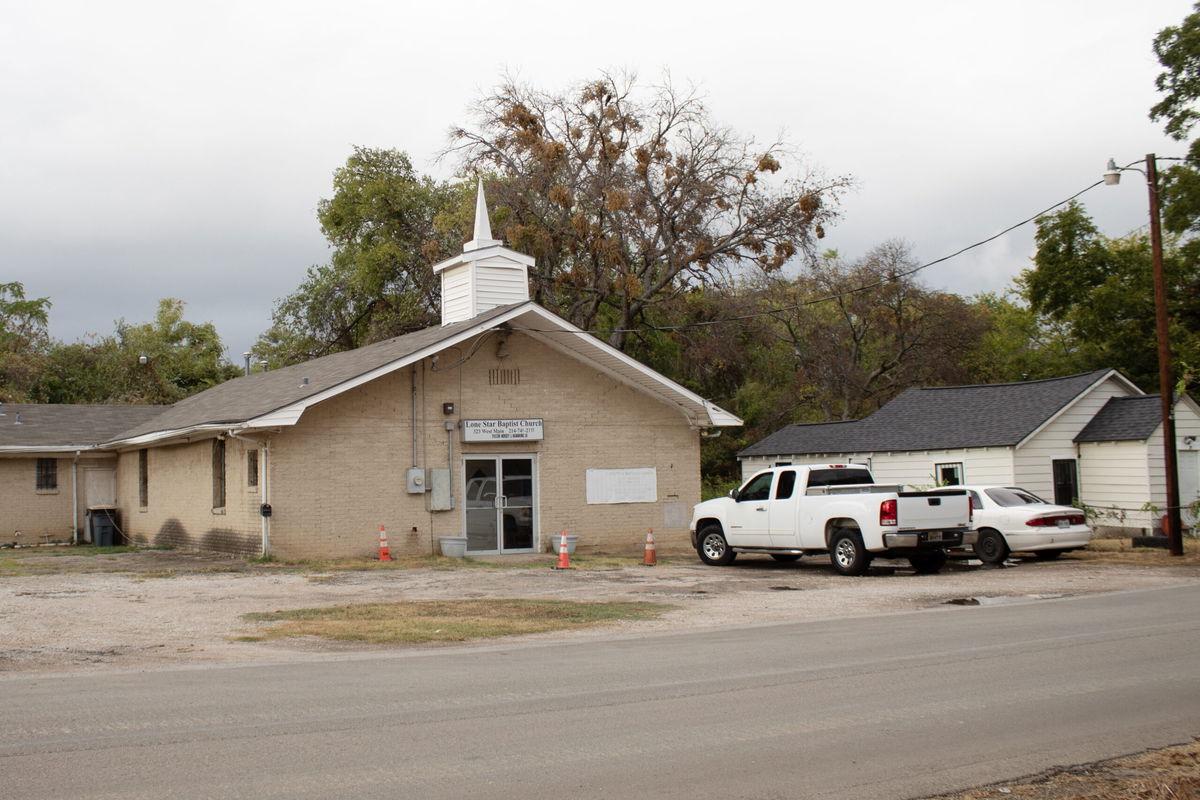
Lifelong West Dallas resident Paula Hutchison is worried that a new high-speed train may go right through her home on West Main Street.
“They’ll have all the justification that they need to say, ‘You’ve got to go,’” Hutchison says. “I asked what they’ll offer people, and she said, ‘Market value,’ and I said, ‘Market value? No market value is not going to be enough to get another home.’”
Hutchison was one of about 50 people attending the North Central Texas Council of Government (NCTCOG)’s meeting discussing phase one of the planned rail to connect Dallas and Fort Worth. Neighbors met at the West Dallas Multipurpose Center and were able to talk directly with NCTCOG staff members.
NCTCOG is made up of various North Central Texas city and county governments, as well as school districts, to allow for cities to more easily coordinate on long-term projects. NCTCOG launched this project in spring 2020, and is looking at how this project may connect with plans for future rail projects from Houston to Dallas and Fort Worth to Laredo.
NCTCOG senior planning manager Dan Lamers says a priority during the first phase was identifying the stations and routes for the train, and how it would interact with existing infrastructure, particularly I-30. NCTCOG identified 27 potential routes for the rail as it passes through West Dallas but settled on an alignment on top of West Main Street that then rejoins I-30.
Across the entire route, they estimate 15 to 20 homes and businesses may be affected.
Hutchison’s neighborhood is sparse — made up of a handful of homes and some empty lots.
“You’re talking about folks who’ve been in their homes for 40, 50, 60 years … a home that was passed down through generations,” Hutchison says. “That jumped out at me, if you asked me what I got out of this project, what was the main issue for me? Displacement, and the disadvantages that it’s going to cause so many people.”
If NCTCOG chooses this path, they would be able to claim the land using eminent domain, because the train is for public use. Homeowners would be compensated for the “fair market value” of their properties, and NCTCOG also would cover a variety of relocation costs.
Lamers says that narrowing down these routes was determined by existing major roads, but that hearing concerns from neighbors in West Dallas was the purpose of the meeting, so plans could be revised if needed.
He noted that NCTCOG’s recommended route includes a small fraction of total land — roughly 15% — that would need to be acquired via eminent domain.
“All of the other alignments require much more greenfield development, groundfield development where we would be taking other private land,” Lamers says. “I’m gonna estimate that to be about 85% of the alignment is within the public right of way.”
District 6 Councilman Omar Narvaez says that because the rail has to go through West Dallas, he wants to ensure that residents will benefit from the train in some way. He also proposed a stop in West Dallas at the new Harold Simmons Park.
“One of the things we’ve already noticed is having a 30-foot-high elevated train going above the Eagle Ford neighborhood, which everyone here is not happy about,” Narvaez said at the meeting. “I think it’s important to figure out how we can get that done, because it’s going to be so beneficial not just to West Dallas, but to the City of Dallas for the extra economic impact.”
A key factor in planning was travel time, which is estimated to be 23 minutes from downtown Dallas to downtown Fort Worth with one stop in Arlington. The Dallas station would be located at the intersection of Cadiz and South Austin, which Lamers says was chosen based on collaboration between NCTCOG and the Texas Railroad Commission, to allow for the DFW rail and a future Houston to Dallas rail to work compatibly.
Gloria Jimenez, a West Dallas neighbor and staff member at Brother Bill’s Helping Hand, says she wonders how helpful this rail would be for her neighbors, and how expansive the project will be.
“With this project, how much more land is going to be acquired to build this?” Jimenez says. “When I think about the clientele we work with, and who will really benefit from the high-speed train, I don’t think it’s going to be people we consider our neighbors.”
According to Jimenez, West Dallas neighbors are more concerned with issues like local transportation and affordable housing.
“My biggest concern is with the gentrification in the neighborhood,” Jimenez says. “Since 2016, we have seen how folks have been affected by homes being taken … to be knocked down with improvements or [turned into] apartments. What is so hurtful, in my opinion, is that there is no affordable housing for the clientele we serve.”
NCTCOG communications manager Rebekah Gongora says the study is continuing to collect community feedback, which can be given during their in-person meetings or on their website. The next step for the project is to complete the National Environmental Protection Act, or NEPA, studies, which should be completed within 12 months.

High Speed rail will never get built, just look at California